10 Endangered Species of Trees
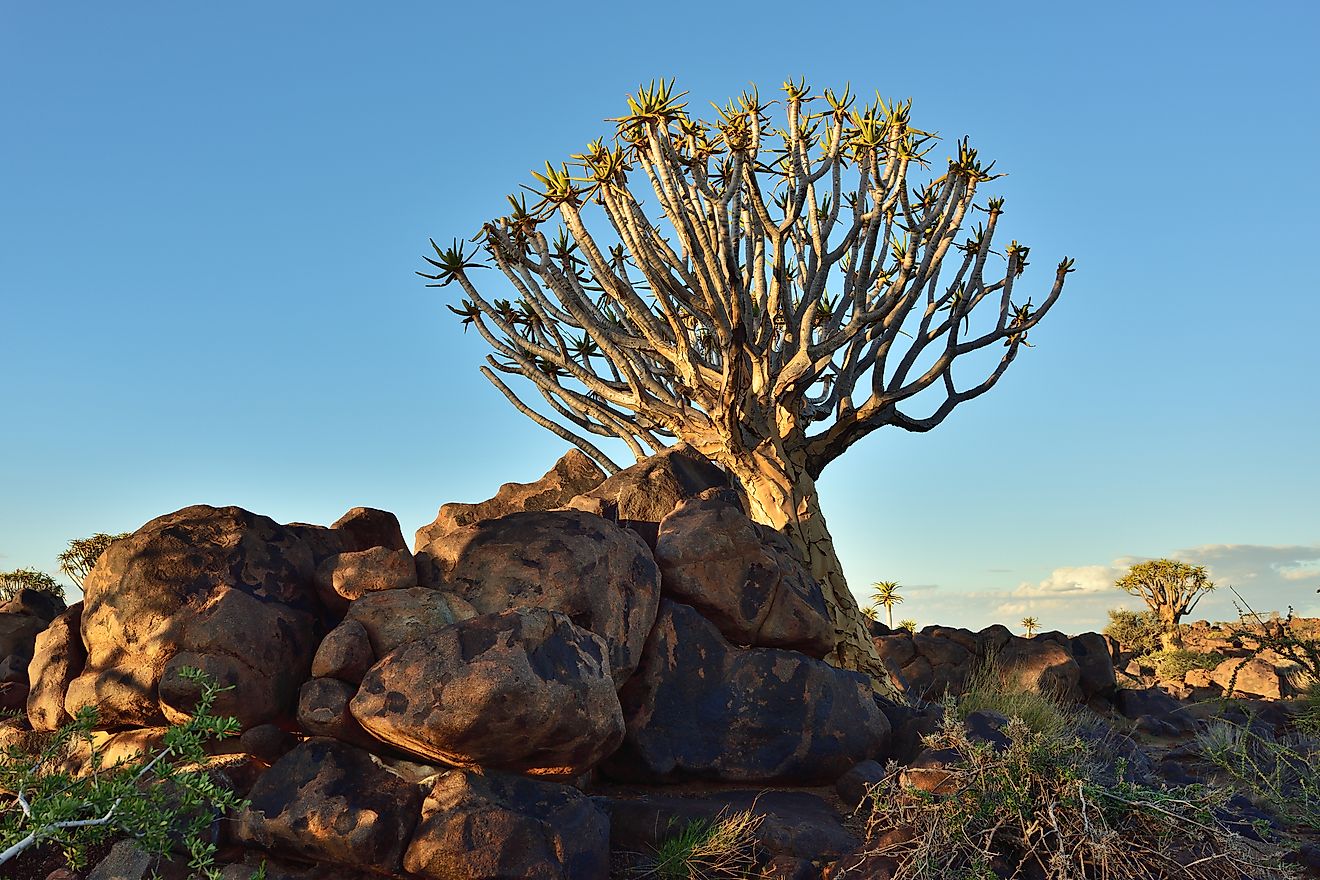
Trees have immense benefits not only to the environment but also to humankind. There are several beautiful trees species which successfully grow in different climatic conditions around the world. These tree species either grow naturally in the wilderness and parks. Due to human activities and other effects, some of the valued and unique species of trees are slowly disappearing from the earth’s surface. Below is a list of the 10 most beautiful that are endangered or threatened, and an overview of the environmental threats which they are facing.
10. Grandidier's baobab
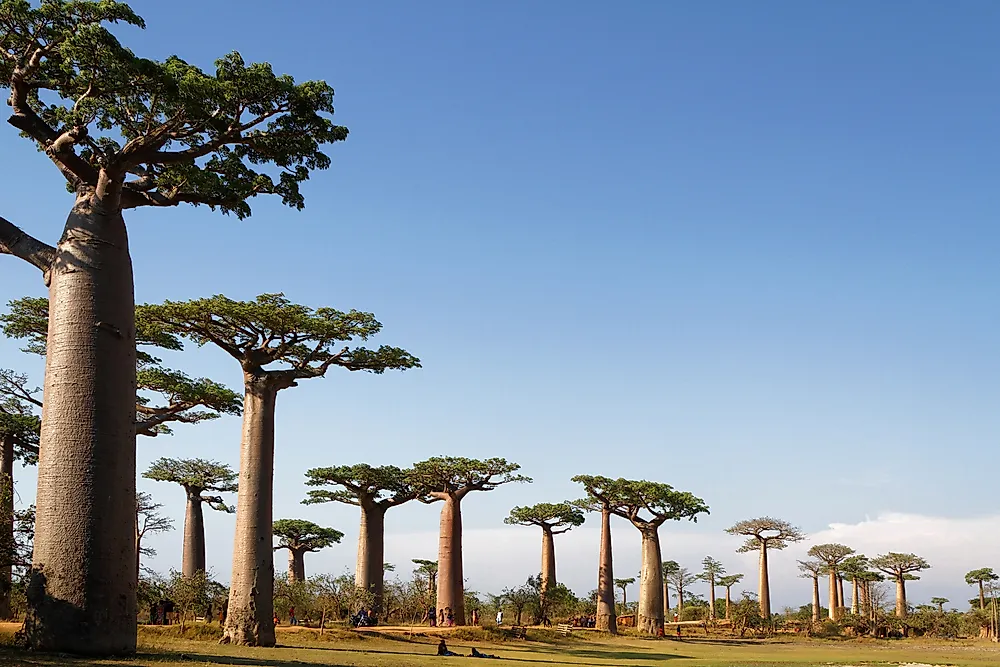
Grandidier’s baobab is the biggest and the most popular of the famous species of Madagascar baobabs. It is characterized by huge cylindrical trunks that have an average diameter of 3 meters with a reddish-brown bark. The tree can grow up to a 30 meters in height. It bears non-succulent fruits with kidney-shaped seeds that contain an edible pulp rich in vitamin C and cooking oil. The tree grows in dry areas, especially near seasonal rivers. Grandidier’s baobab is threatened by the clearing of land and deforestation to pave way for agriculture and is listed in the IUCN Red List of endangered species. Apart from creating space for agriculture, the Grandidier’s baobab is also harvested for softwood.
9. Western Wheatbelt Wattle
Under the world’s conservation Act of 1950, the western Wheatbelt Wattle was listed as an endangered species. This tree is endemic to Australia’s wheat Belt. They grow in dry areas in the form of shrubs. The tree is short and small in size with yellowish leaves. The western Wheatbelt Wattle grows in dense shrubs and in low lying swampy habitats. Weeds, building of roads, rising salinity, and fires are some of the major threats to the Western Wheatbelt Wattle.
8. Quiver Tree
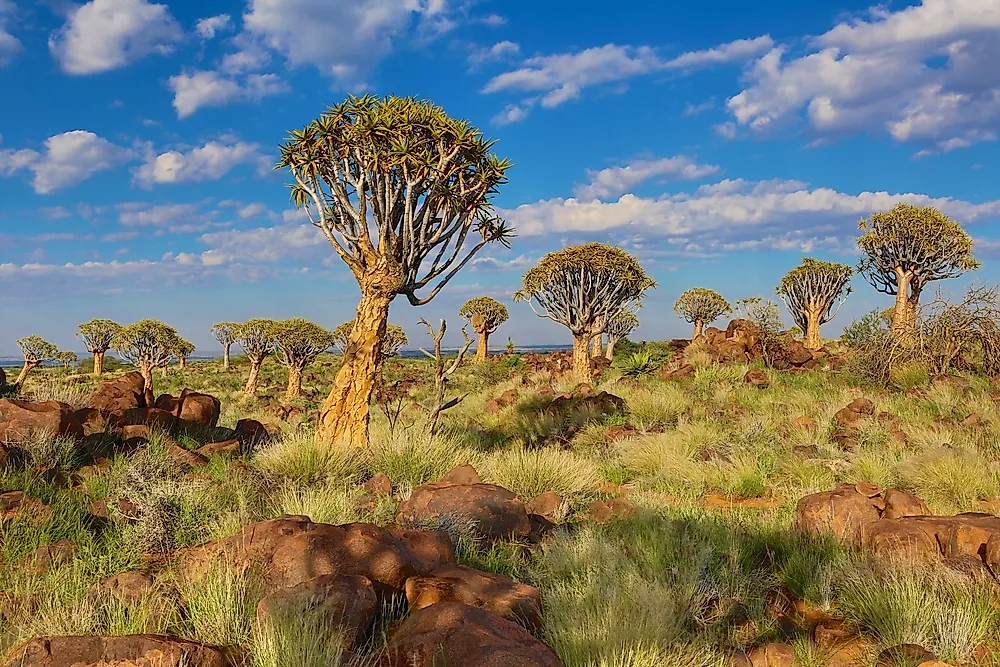
The quiver tree is indigenous to the arid areas of Southern Africa. It is mostly found in the Northern Cape and Southern Namibia. It belongs to the succulent species of aloes. The succulent leaves and stem helps it to survive the arid climate. The trees grow up to a height of 10 meters. The brown bark is covered in a powdery substance which works to reduce evaporation. It is also grown in other arid areas of the world for the purpose of landscaping. The quiver tree is endangered due to its inability to thrive successfully in its original habitat. It is also prone to aphids and other insects, further threatening its survival. According to IUCN, quiver tree seeds are not dispersed effectively, which limits its growth and multiplication.
7. Seaside Adler
The seaside Alder is endemic to North America. It is common in Oklahoma, Georgia, Maryland, and Delaware. They thrive well in a salty environment. They are small trees with a smooth and grayish bark. The leaves are simple with a serrated margin. They produce conical fruits that are dispersed by water. The flowers produced are yellow in color and are produced during autumn. Poor genetic diversity, overgrazing, and rising levels of salt are the major threats to the Seaside population.
6. Parana pine
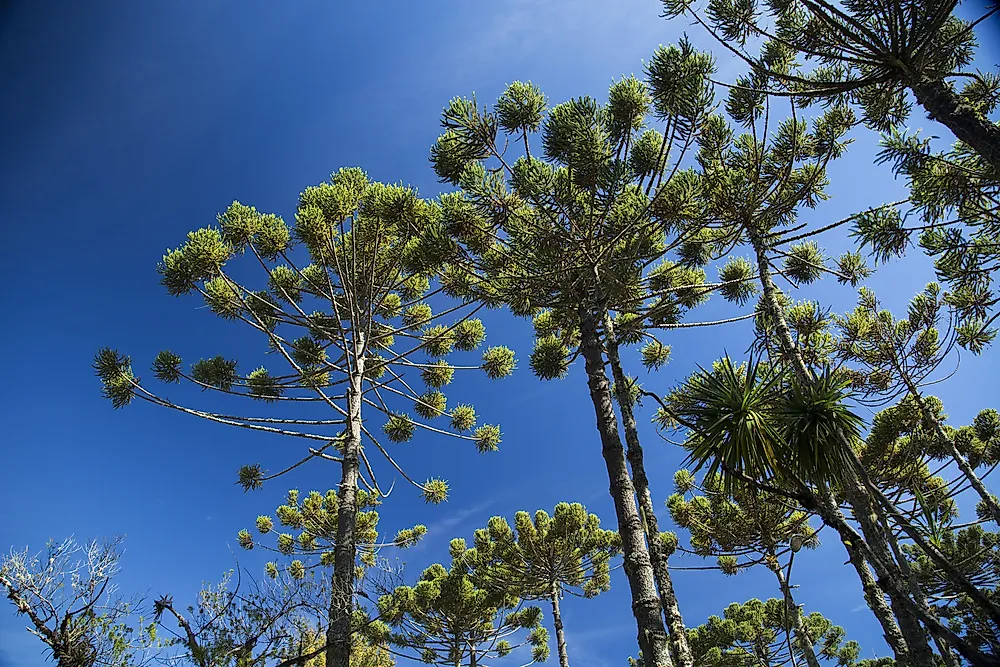
The Parana Pine is a critically endangered species in the genus conifer. It is indigenous to Southern Brazil, Northeast Argentina, and Paraguay. Because of the name Parana pine, most people consider it to be a pine - however, it is not. The tree is an evergreen and grows up to a height of 40 metres. The leaves are tough, rough, and triangular in shape. The Parana pine is dioecious, and male and female reproductive parts are found on separate trees. Many Parana pined have been cleared to create space for farming. Almost 97% of Parana pines have been cleared.
5. Dragon's blood tree
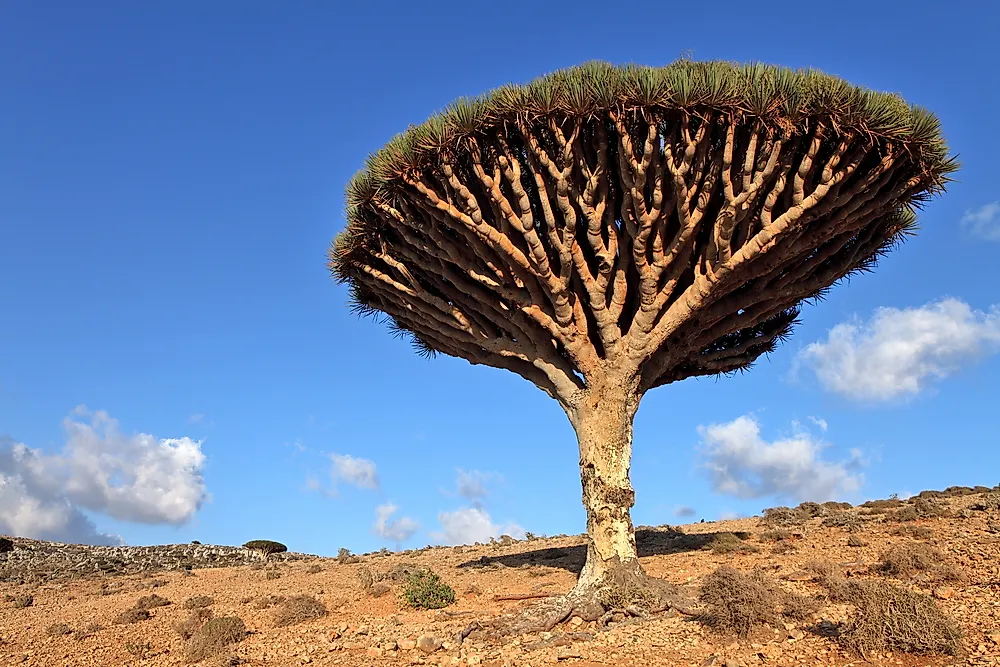
The dragon’s blood tree is native to parts of Yemen. Its name is coined from the red sap it produces. The crowns of these trees have a dense growth of leaves and are arranged to appear like an umbrella. Unlike most of the monocot plants, Dragon’s blood tree undergoes secondary growth. Its growth zones are similar to those of dicot plants. The fruits are small and succulent, with 1-3 seeds. The leaves measure up 60 cm long and up to 3 cm wide. The thick branches of this tree is further divided into two sections. The red resin is used for medicinal purposes and also to dye clothes. The tree is often cut down for its leaves that used to make ropes and for its barks used to make beehives.
4. Pokemeboy
The Pokemboy is endemic to the British Virgin Islands. Its natural habitats are tropical dry forests, dry shrubland, sandy shores, and rural gardens. The trees are small in size and mostly grow as shrubs. It was included in the IUCN Red List of critically endangered species due to habitat loss. Its clearance to pave way for infrastructure development and natural calamities like hurricanes are key factors that are threatening its existence. High rising sea levels are also threatening to clear these shrub-like plants.
3. Chilean pine
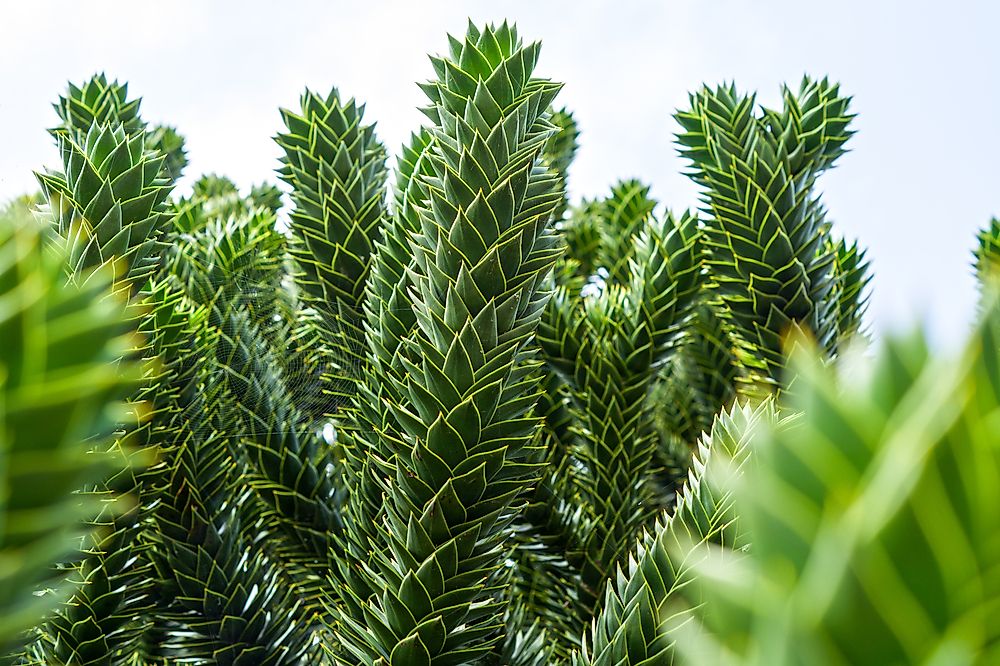
The Chilean pine is native to southern Chile, western Argentina, and southeast Brazil. It was listed as endangered in 2013 due to its diminishing population. The Chilean Pine is the national tree of Chile. The tree is evergreen and grows up to a height of 40 meters. The male and female cones are usually found on separate trees. The leaves are tough, thick and rough. The fruit bears nut-like seeds that are dispersed by wind. The seeds are also dispersed by animals, especially human beings and rodents. In 2002, the Araucaria Forest was consumed by fire, burning down thousands of Chilean Pine. Excessive harvesting of the seeds also reduces its propagation.
2. Farser's fir
The Fraser Fir is endemic to the United States, especially in North Carolina, eastern Tennessee, and southwest Virginia in the Appalachian Mountains. The Fraser Fir is usually evergreen and small in size. It grows to an average of 10-15 meters tall with a trunk diameter of 40-50 cm. The crown is usually conical with leaves that are needle-like in shape. The leaves are usually dense and are packed together when the tree is small and open up as the tree matures. Fraser Fir is mostly used as Christmas tree, which threatens its population, especially during the Christmas season. Pests have also led to the destruction of over 80% of mature trees.
1. Eagle wood
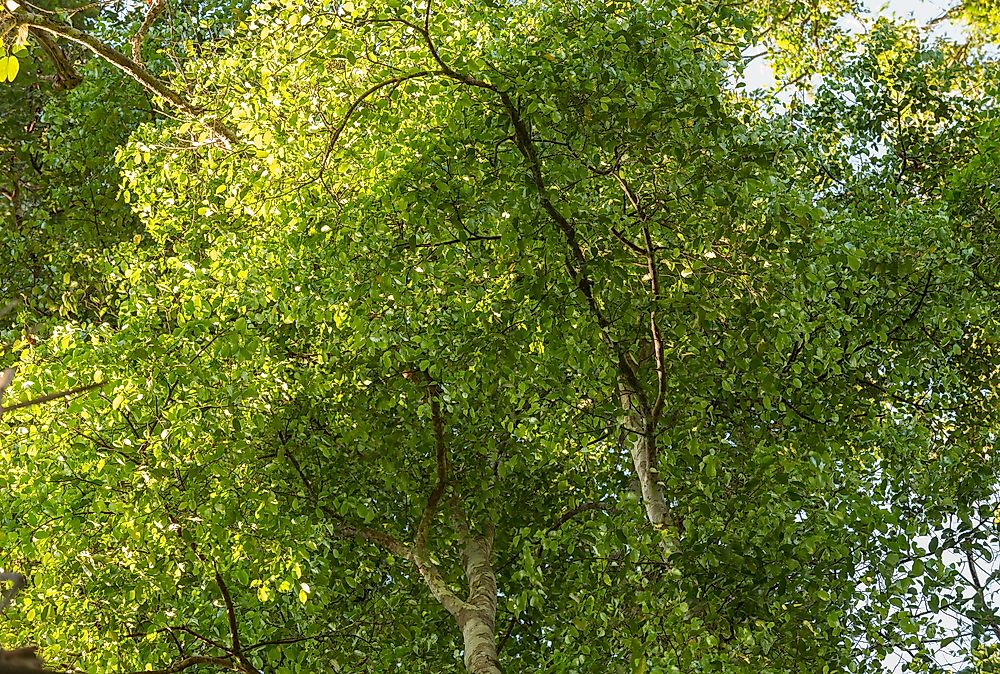
The Eagle wood tree has been listed as endangered due to its dwindling population which is caused by deforestation. Eagle wood is an evergreen tree that has a straight stem that grows up to a height of 23 meters. It has simple leaves and produces white flowers and capsule-shaped seeds. The bark of eagle wood is used to make perfumes and incense, due to its characteristic pleasant smell. Furthermore, the bark is also used as a medicine, especially in Tibet, India, and China to treat ear problems, skin diseases, and open wounds. Oil is also extracted from the plant. Over-harvesting of the plant and loss of its habitat are the major threats to Eagle wood.











